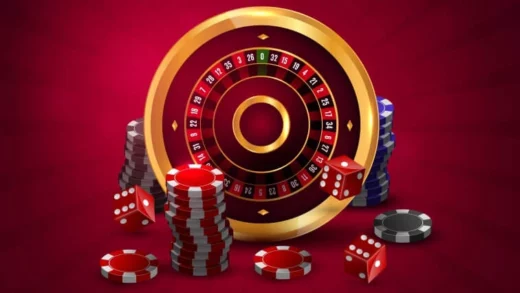Heads Up 7 Up is a timeless and enjoyable classroom game that has captured students’ hearts across different eras. This uncomplicated yet engaging activity is often used as a delightful break or a quick energizer, attracting players of various age groups.
With its intriguing combination of mystery, strategy, and collaborative play, the game continues to be popular in schools worldwide. In our exploration of Heads Up 7 Up, we will uncover its historical origins, diverse adaptations, and the lasting joy it brings to participants, fostering social interaction and injecting a sense of enjoyment into the educational atmosphere.
What Is Heads Up 7 Up?
Heads Up, Seven Up is an engaging classroom activity designed to stimulate critical thinking and social interaction among students. In this popular game, participants try to discern the identity of the person who selected them while their heads are down.
The challenge involves a combination of deductive reasoning, active listening, and intuition, making it an excellent exercise for cognitive development.
Known by various names such as “Seven Up,” “Thumbs Up,” “Heads Down, Thumbs Up,” or simply “Heads Down,” this game has been a part of American school culture since at least the 1950s. Its enduring popularity speaks to its effectiveness in promoting both intellectual and social skills in a playful setting.
By incorporating Heads Up and Seven Up into the classroom routine, educators can provide students with a dynamic and enjoyable way to enhance their cognitive abilities, communication skills, and overall learning experience.
The game’s longevity in educational settings underscores its enduring value as a valuable tool for fostering student engagement and collaboration.”
Objective
The person guessing needs to figure out which one of the seven pickers selected them. On the other hand, the pickers want to keep their identity a secret.
What You Need
You’ll require a room with desks or tables, like in a classroom, or you can play at home using tables or countertops.
Number of Players
Typically, this game is played in a classroom with 15 or more players. There are seven pickers (known as the “7 up”), seven or more potential guessers, and one teacher or leader. If you have fewer than 15 players, ensure there’s at least one fewer picker than half of the total players.
Duration
Each round takes about 5 minutes, and you’ll usually play 3-6 rounds, making the whole game last around 15-30 minutes.
Age Group
It’s suitable for all ages, but it’s commonly enjoyed by kids in upper elementary school through junior high school (3rd-8th grade).
Skills
- Making Friends: 7 Up is a cool game that helps you talk to others, take turns, and follow the rules.
- Thinking Smart: When you play, you have to use your brain to figure out who picked you. It’s like solving a fun puzzle.
- Sneaky Moves: If you’re the one picking, you need to be quiet and not give away who you are.
- Staying Focused: Everyone needs to listen carefully to the game.
Why Heads Up 7 Up is Great for Kids and Students
- Fun Game: It’s exciting to be a little sneaky, choose someone, and guess who picked you.
- Easy Rules: The rules are simple, so you can learn them quickly and start playing in no time.
- Moving Around: You get to walk around the class, making the game more active and fun.
- Taking a Break: It’s a nice break from regular class activities, and you can return to learning with a fresh mind.
How To Play Heads Up 7 Up
Get Together: Bring at least 15 friends into a classroom or any open space where you can play.
Who You Need: You’ll have seven pickers (they’re the “7 up”), seven or more other players (who will become the “guessers”), and someone to lead the game, which can be a teacher or even a student. If you have fewer people, check the “Variations” section below for some ideas.
Where to Play: This game is usually played in classrooms, but you can also have fun with it at home. Classrooms are good because there are already desks or tables for everyone.
Leader’s Job: Choose someone to be in charge of the game. This person is called the facilitator. In most cases, it’s a teacher.
Pick Your Pickers: The facilitator picks the first seven pickers. Or, the facilitator chooses the first one, and then each picker picks another until there are 7 in total.
Start the Game: Begin the part where you choose people with the words, “Heads down, thumbs up, it’s time to play seven up.” This helps everyone know it’s Time to pick.
How to Pick: The leader, called the facilitator, guides the picking. Everyone, except those doing the picking, puts their heads down and thumbs up. To make it fair, the facilitator might also turn off the lights. This helps to stop people from cheating and seeing who is picking.
Choosing the “Guessers”: When everyone is in position with heads down and thumbs up, the pickers quietly touch the thumb of the person they choose. The goal for pickers is to do this without giving away who they are. After picking up, they go back to the front of the room. Those chosen (called “guessers”) should pay attention to clues, like footsteps, to figure out who picked them.
Guessing Time Begins: After the seven pickers choose someone and come back to the front, the leader says, “Heads up seven up.” This means everyone who had their eyes closed should open them.
Stand Up if Picked: If you were picked, stand up. Now, try to guess who picked you. If you get it right, you become the next picker for the next round. The people who picked you sit down. If you guess wrong, you sit down, and the person who picked you stays as the picker for the next round.
Keep Playing: The game goes on with more rounds. Pickers should try to choose people who haven’t been pickers yet so everyone gets a chance to be both the guesser and the picker.
Heads Up 7 Up Video Guide
Heads Up 7 Up Rules
Choosing Time: Each person who’s picking picks one other person. There are different ways to do this; you can check for more ideas.
Keep Eyes Closed: Remember to keep your eyes closed if you’re not picking up and your head is down. No peeking at anyone’s feet.
Guessing Game: Everyone who was picked gets a turn to guess who picked them. If they guess right, they switch roles with the picker for the next turn. If they guess wrong, the picker stays the same for another turn.
Variations For Head Up 7 Up
For a Smaller Group: If you have fewer than 14 people, that’s okay. Just make sure there are at least as many people watching as there are picking. The smallest group you need is seven people: 3 pickers, three guessers, and one person leading the game.
For a Larger Group: If you have more than 25 people, you might want to split into two groups so everyone can take turns. Another option is to let the person picking choose up to 3 people to guess each Time.
Outdoor Heads Up Seven Up Game Idea
Transform your classic Heads Up Seven Up game into an outdoor delight. Gather friends in a cosy outdoor space, create a circle, and designate “7 up” pickers and guessers. Toss a softball for picking to add a fun twist, and keep guessers in suspense by having them close their eyes.
When the pickers return, the leader signals the start of guessing, with guessers opening their eyes to identify their pickers. Embrace the outdoor vibe with added sounds like footsteps on grass.
Try variations like hopping before guessing, and enjoy multiple rounds for everyone to have a turn. Adapt the rules to fit your outdoor fun, and relish the laughter and fresh air in your Heads Up Seven Up game.
How To Play It
Onesies: Throw the ball at the wall, spin around, and catch it before it falls.
Twosies: Toss the ball under your leg, let it bounce off the wall or ground, and catch it. Do this two times.
Threesies: Bounce the ball on the ground, tap it against the wall with your hand, and catch it before it falls. Repeat this three times.
Foursies: Bounce the ball from the ground to the wall and back to you. Repeat this four times.
Fivesies: Bounce the ball on the ground five times.
Sixsies: Bounce the ball against the wall, let it bounce once on the ground, catch it, and repeat this six times.
Sevensies: Bounce the ball seven times and catch it after the last bounce.
Keep playing the game, doing the steps we talked about again and again. But here’s a fun twist: In the second round, clap your hands once between each throw or bounce. And guess what? As you go on, add one more clap for each new round.
Seven Up Card Game: A Quick Guide for Two Players
The Seven Up card game is a quick and fun game for two people. It takes about 20 minutes to play, and the goal is to reach seven points to win. All you need is a regular deck of playing cards.
How to Play
Setup
- Choose someone to be the dealer. They shuffle the cards and give six to each player.
- The rest of the cards go in a pile, and the top card is turned face up. If it’s a Jack, the dealer gets one point.
Trump Decision
- The dealer decides if the face-up card’s suit is the trump suit (a special suit).
- If not, three more cards are given to each player, and a new card is turned up until a different trump suit is found.
Player Choices
- Players can choose to throw away some cards until they have six again or play with all their cards.
Starting the Game
- The player who didn’t deal starts by playing a card.
How to Win a Round
- The dealer must play a card of the same suit or use a trump card if they have it.
- The winner of each round is the one with the highest card of the chosen suit or the one who uses a trump card.
Scoring
- Players keep the cards they win in a pile in front of them.
- He first to reach seven points wins the game.
After each round, you get points in these ways:
- You get a point if you have the highest special card.
- You also get a point if you have the lowest special card.
- Having a particular special card called the Jack gives you one more point.
- Another point is given if you have the most valuable total of all your captured cards.
For counting:
- Special cards like Aces are worth 4 points, Kings are 3, Queens are 2, and Jacks are 1. Other cards are worth their normal numbers.
Once you’ve collected the cards, switch roles between the dealer and non-dealer. Keep playing rounds, taking turns being the dealer, and counting the points. The first person to get seven points wins.
If there’s a tie, play more rounds until someone wins. And if two players get more than seven points in the same round, the one with the higher score wins.
Tips for Playing Smart: “Heads Up Seven Up”
Save Your Trump Cards
- Instead of starting with your best cards, keep them for later.
- Use your lower-ranked trump cards to beat the opponent’s cards.
- This way, you won’t have to play your best cards too early and risk losing them.
Watch Out for Long Games
- If it takes a while for everyone to decide on the best cards (trump), the game might take longer.
- More time choosing means more cards in everyone’s hands.
Different Versions, Same Fun
- Heads Up Seven Up can be a sitting game, an active game with a ball, or even a card game.
- No matter which version you choose, it’s sure to be a fun and enjoyable time.
Recommendation
How To Play Mash: Mansion Apartment Shack House
How To Play Jenga: Rules, Strategy & More
How To Play Crazy 8: Rules, Tips, Variations & More
How To Win Mancala: Easy Guide To Master Mancala
How To Play Garbage Card Game AKA Trash Card Game
Wordfinderx: Your Secret Weapon for Word Puzzles
Is Mario Football 2024 Going to be The Next Game: Watch Mario Football 2024 Trailer
How To Play Bunco: A Step By Step Guide
How To Play 4 Corners Game: A Complete Guide
Conclusion
In essence, Heads Up 7 Up transcends its role as a classroom game, becoming a cherished tradition that spans generations. Its simplicity and engagement persist as timeless qualities, transforming it into more than just a break but a catalyst for social interaction.
This global phenomenon not only injects joy into education but also leaves behind enduring memories of laughter and camaraderie. As a cherished thread in the tapestry of student experiences, Heads Up 7 Up bridges the past, present, and future, weaving together shared moments of play and delight.
FAQs
Q: Why was it called Heads Up 7 Up?
A: The origin of the term “seven up” in the game “heads up seven up” is attributed to the seven individuals stationed at the front of the room. These participants, recognized as the “pickers,” play a vital role in the game by selecting seven participants, termed “guessers,” during the course of the gameplay.
Q: Why do teachers play heads up and seven up?
A: Students often show limited interest in completing worksheets. However, engaging in activities like Heads Up Seven Up promotes physical movement and interaction and encourages critical thinking about the subject matter. This increased engagement enhances motivation and effectively breaks the monotony of a regular school day.
Q: What are the rules to head up seven up?
A: After being tapped, a student extends their thumb, and then the seven individuals announce, “Heads up seven up” Subsequently, the touched students have the chance to identify which of the seven touched each of them. If they make a correct guess, they can switch places and become one of the students at the front.
Q: What are heads down and seven up?
A: Heads up, seven up (alternatively known as Thumbs up, seven up or Heads or Heads down Thumbs up) is a game where selected participants, indicating their choice with raised hands, attempt to identify the person who tapped their heads. This popular activity is typically enjoyed in elementary schools.



